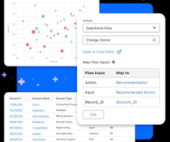Key Aspects of Time Series AI
1. Time Series Data
Time series data consists of sequential data points recorded at regular intervals, enabling the analysis of trends, seasonality, and patterns over time. This structured format is essential for forecasting, anomaly detection, and other AI-driven analyses.
2. AI Techniques for Time Series Analysis
Multiple AI and machine learning techniques are applied to time series data, including:
- Traditional Models: ARIMA, SARIMA
- Deep Learning Models: LSTM networks, Transformers
- Generative AI: TimeGPT and other advanced models
These techniques help in forecasting future values, detecting anomalies, classifying sequences, and imputing missing data.
3. Applications of Time Series AI
Time series AI is widely used across industries for:
- Forecasting: Predicting future trends (e.g., stock prices, sales, energy demand)
- Anomaly Detection: Identifying irregularities (e.g., fraud, equipment failures)
- Classification: Categorizing time series data (e.g., ECG signals, sensor data)
- Imputation: Filling gaps in incomplete datasets
- Generative AI: Creating synthetic time series data for enhanced forecasting
4. Real-World Examples
- Finance: Stock market prediction, risk assessment
- Retail: Demand forecasting, inventory optimization
- Healthcare: Patient monitoring, disease progression analysis
- Energy: Load forecasting, renewable energy management
5. Benefits of Time Series AI
- Higher Accuracy: AI models capture complex patterns for more precise predictions.
- Better Decision-Making: Data-driven insights improve planning and resource allocation.
- Automation: Reduces manual effort in data cleaning, modeling, and forecasting.
- Operational Efficiency: Optimizes processes across industries, saving time and costs.
By leveraging AI for time series analysis, businesses and organizations gain a competitive edge through smarter forecasting and automation.
🔔🔔 Follow us on LinkedIn 🔔🔔













